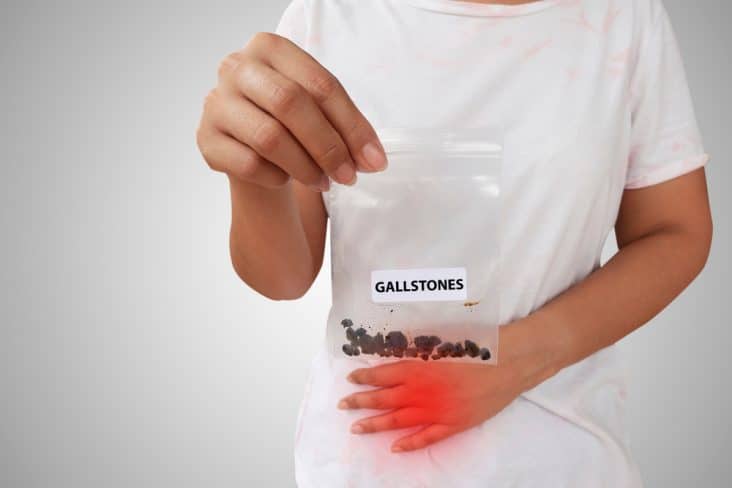Gallstones are hardened deposits of digestive fluid that can form in your gallbladder; a small, pear-shaped organ on the right side of your abdomen, just beneath your liver. These deposits are formed from the crystallisation of the bile, a fluid made by the liver and secreted into the bowel through the bile ducts, which helps digest fats.
Gallstones range in size and you may experience either one or many. They tend to cause blockages in the gallbladder or the bile duct, leading to inflammation and pain in the upper-right part of the abdomen, lasting from a few minutes to several hours. Inflammation of the gallbladder, when caused by gallstones, is called cholecystitis.
Diagnosis
If you’re experiencing pain along with vomiting and fever, your doctor may ask you to do a few tests to confirm the diagnosis. There are a few procedures that are used to diagnose gallstones.
- Abdominal ultrasound scan: this is the most common test used to look for signs of gallstones. A transducer or a device is moved back and forth across your stomach, sending signals to a computer to create images to show the structure of your abdomen.
- Endoscopic ultrasound: This procedure helps identify smaller stones that may be missed in an abdominal ultrasound. In this procedure, a thin, flexible tube, or endoscope, is passed through your mouth to your digestive tract.
- Blood tests: Blood tests are generally done to detect any changes in your blood that reveal inflammation of the gall bladder, Liver and/or Pancreas
- Other imaging tests:
- CT (computerized tomography) scan: to spot gallbladder complications such as stones, ruptures and infections.
- MRCP (magnetic resonance cholangiopancreatography): an MRI exam that produces detailed images of the gall bladder, bile duct, pancreas and the liver.
- Hepatobiliary iminodiacetic acid (HIDA) scan: a radioactive tracer injected into a vein in your arm to diagnose issues in the gallbladder and bile ducts.
- ERCP (endoscopic retrograde cholangiopancreatography): used to confirm the diagnosis of gall stones in the bile duct and at the same time remove these.
Treatment
Depending on your symptoms, diagnostic testing, age, health status, and any medication you may be taking, your doctor may recommend one of the following treatment options. In certain cases, you may even be recommended a combination of these.
Treatments options for gallstones include:
- Medication: you may be prescribed oral medications including pain relief and antibiotics.
- Endoscopic retrograde cholangiopancreatography (ERCP): beyond detecting the presence of gallstones, this procedure can be used to remove gallstones as well. During this procedure, an endoscope is used to locate and remove these gallstones.
- Cholecystectomy: this procedure is used to remove the gallbladder and is usually a minimally-invasive surgery. It’s a laparoscopic surgery (where the procedure is conducted via a small incision).
Request more information on the diagnostic procedures and treatment options for gallstones
The diagnosis and treatment of gallstones may seem simple enough but it’s important to receive expert advice before you undergo any treatment to recover from this condition.
For more information on the diagnosis and treatment of gallstones, speak to a team of experienced gastroenterologists, led by Dr Suhirdan Vivekanandarajah, at the Sydney Gut Clinic.

